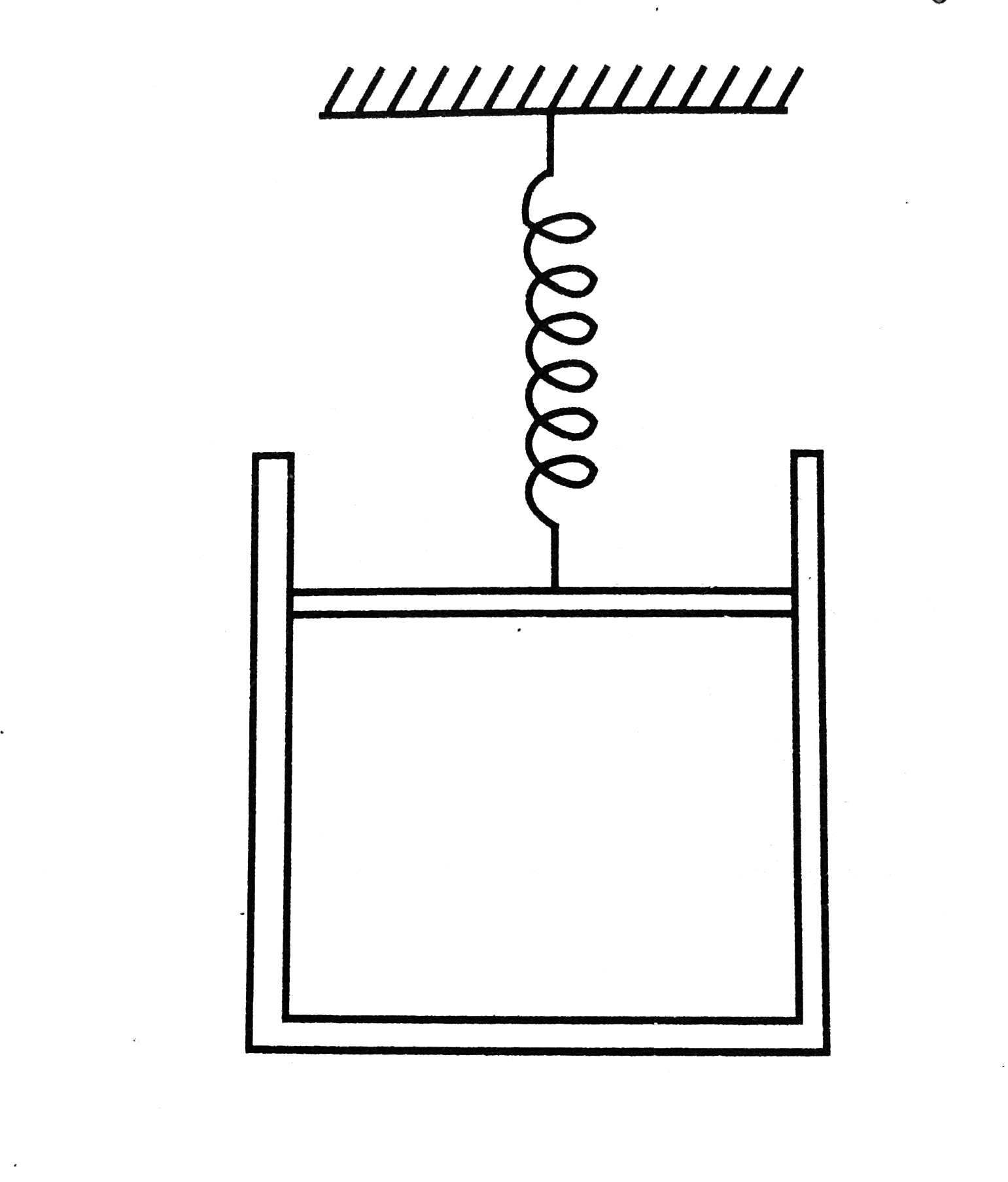The incident intensity on a horizontal surface at sea level from the sun is about 1kWm−2.
Q. Find the ratio of this pressure to atmospheric pressure p0 (about 1×105 Pa) at sea level
5×10−11
4×10−8
6×10−12
8×10−11
The correct Answer is:A
To solve the problem, we need to find the ratio of the radiation pressure exerted by sunlight on a surface to the atmospheric pressure at sea level. Here’s a step-by-step solution:
Step 1: Understanding the Intensity of Light
The intensity S of sunlight incident on a horizontal surface is given as 1kW/m2. We need to convert this into standard SI units:
S=1kW/m2=1000W/m2
Step 2: Calculating Radiation Pressure
The pressure P exerted by the absorbed light can be calculated using the formula:
P=12Sc
where c is the speed of light, approximately 3×108m/s.
Substituting the values:
P=1210003×108
Calculating this gives:
P=10002×3×108=10006×108=16×105≈1.67×10−6Pa
Step 3: Considering Reflected Light
The pressure exerted by reflected light is given by:
Preflected=2S3c
Substituting the values:
Preflected=2×10003×3×108=20009×108≈2.22×10−6Pa
Step 4: Total Radiation Pressure
The total radiation pressure Ptotal on the surface is the sum of the pressures from absorbed and reflected light:
Ptotal=P+Preflected=1.67×10−6+2.22×10−6=3.89×10−6Pa
Step 5: Atmospheric Pressure
The atmospheric pressure P0 at sea level is given as:
P0=1×105Pa
Step 6: Finding the Ratio
Now, we can find the ratio of the radiation pressure to the atmospheric pressure:
Ratio=PtotalP0=3.89×10−61×105
Calculating this gives:
Ratio=3.89×10−11
Final Answer
Thus, the ratio of the radiation pressure to atmospheric pressure is:
Ratio≈3.89×10−11
The intensity S of sunlight incident on a horizontal surface is given as 1kW/m2. We need to convert this into standard SI units:
S=1kW/m2=1000W/m2
The pressure P exerted by the absorbed light can be calculated using the formula:
P=12Sc
where c is the speed of light, approximately 3×108m/s.
P=1210003×108
Calculating this gives:
P=10002×3×108=10006×108=16×105≈1.67×10−6Pa
The pressure exerted by reflected light is given by:
Preflected=2S3c
Substituting the values:
Preflected=2×10003×3×108=20009×108≈2.22×10−6Pa
The total radiation pressure Ptotal on the surface is the sum of the pressures from absorbed and reflected light:
Ptotal=P+Preflected=1.67×10−6+2.22×10−6=3.89×10−6Pa
The atmospheric pressure P0 at sea level is given as:
P0=1×105Pa
Now, we can find the ratio of the radiation pressure to the atmospheric pressure:
Ratio=PtotalP0=3.89×10−61×105
Calculating this gives:
Ratio=3.89×10−11
Thus, the ratio of the radiation pressure to atmospheric pressure is:
Ratio≈3.89×10−11
Topper's Solved these Questions
- BOOK - CENGAGE PHYSICS ENGLISHCHAPTER - PHOTOELECTRIC EFFECTEXERCISE - Integer9videos
PHOTOELECTRIC EFFECT
- BOOK - CENGAGE PHYSICS ENGLISHCHAPTER - PHOTOELECTRIC EFFECTEXERCISE - Single Correct Answer Type7videos
PHOTOELECTRIC EFFECT
- BOOK - CENGAGE PHYSICS ENGLISHCHAPTER - PHOTOELECTRIC EFFECTEXERCISE - Multiple Correct10videos
PHOTOELECTRIC EFFECT
- BOOK - CENGAGE PHYSICS ENGLISHCHAPTER - NUCLEAR PHYSICSEXERCISE - ddp.5.514videos
NUCLEAR PHYSICS
- BOOK - CENGAGE PHYSICS ENGLISHCHAPTER - RAY OPTICSEXERCISE - DPP 1.612videos
RAY OPTICS
Similar Questions
The incident intensity on a horizontal surface at sea level from the sun is about 1kWm−2.
Assuming that 50 per cent of this intensity is reflected and 50 per cent is absorbed, determine the radiation pressure on this horizontal surface (in pascals).View SolutionThe mean intensity of radiation on the surface of the Sun is about 10sW/m2. The rms value of the corresponding magnetic field is closed to :
View SolutionWhat is the pressure on a swimmer 10m below the surface of lake? g=10ms−2, atmospheric pressure = 1.01×105Pa
View SolutionIf the density of a gas at the sea level at 0∘C is 1.29kgm−3, what is its molar mass? (Assume that pressure is equal to 1bar.)
View SolutionThe density of the atmosphere at sea level is 1.29kg/m3. Assume that it does not change with altitude, how high should the atmosphere extend?
View SolutionA vessel of base area 100cm×60cm and height 200cm is completely filled with a liquid of density 1.1×103kgm−3.
(a) Ignoring the atmospheric pressure, find :
(i) the thrust at the bottom of the vessel,
(ii) the pressure at the bottom of the vessel,
(iii) The pressure at a depth of 5 cm from the free surface,
(iv) the net force experienced by a metal foil of area 10cm2 placed at a depth of 5 cm from the free surface,
(b) The thrust at the bottom of the vessel if the atmospheric pressure equal to 1×105Nm−2 is taken into account.
Take g=9.8ms−2 .View SolutionWhat is the absolute pressure on a swimmer 10m below the surface of a lake? Take atmospheric pressure 1×105N/m2
View SolutionAn ideal gas has a volume 0.3m3 at 150kPa. It is confined by a spring-loaded piston in a vertical cylinder. Initially, the spring is in relaxed state. If the gas is heated to a final state of 0.5m3 and pressure 600kPa find the work done on the spring (atmospheric pressure, P0=1×105N/m2).
 View Solution
View SolutionA tank is filled by water (ρ=103kg/m3). A small hole is made in the side wall of the tank at depth 10 m below water surface. A water jet emerges horizontal from the hole and falls at horizontal distance R from it. The amount of extra pressure (in terms of atmospheric pressure) that must be applied on the water surface, so that range becomes 3R on the on the ground will be (cross section area of hole is negligible and 1 atm = 105 Pa, g = 10 m/s2)
View SolutionAssuming that the atmosphere has the same density anywhere as at sea level (ρ=1.3kgm−3) and g to be constant (g=10ms−2). What should be the approximate height of atmosphere ?
(ρ0=1.01×105Nm−2)View Solution

